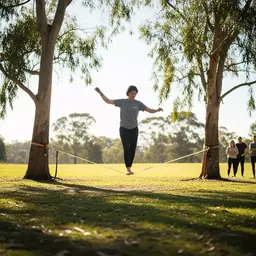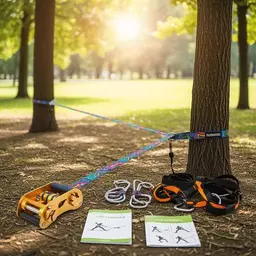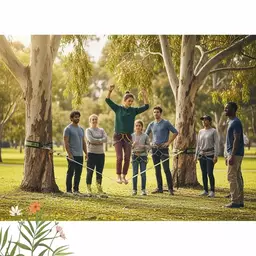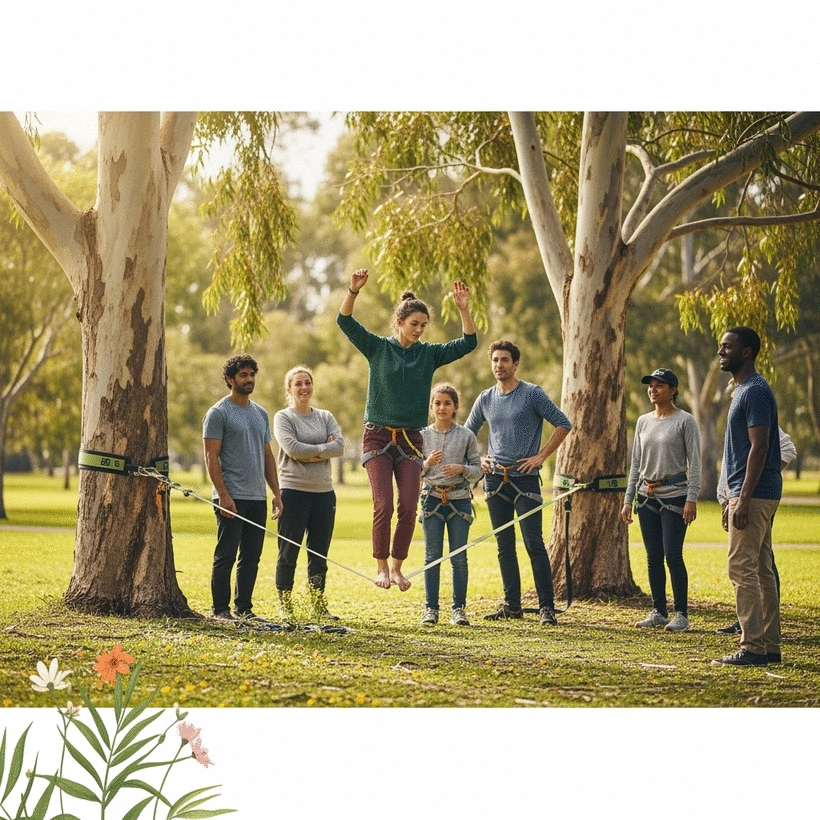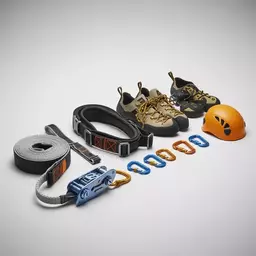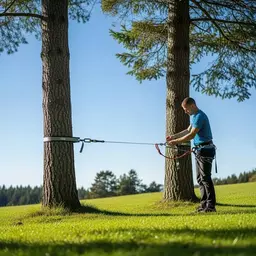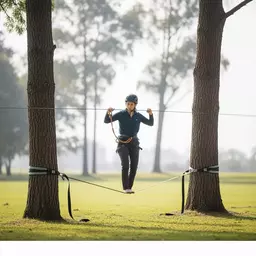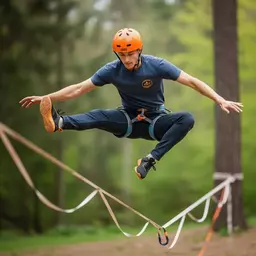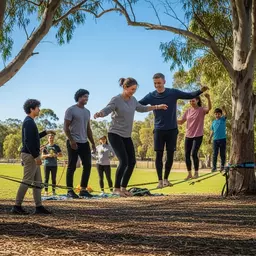Engaging with Australia's Slackline Community
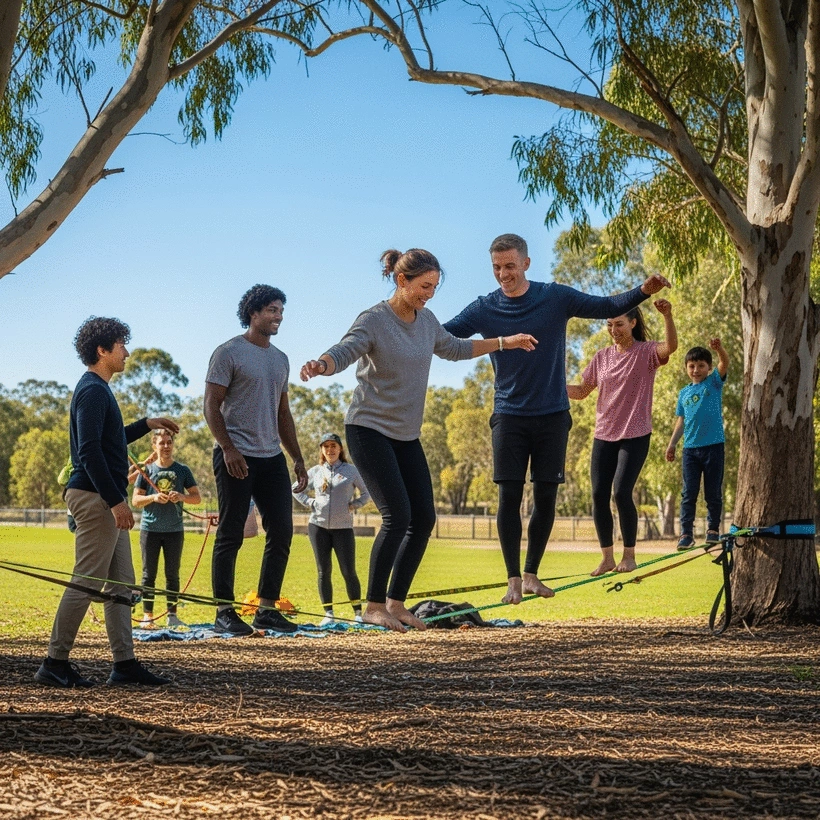
Have you ever stood on a slackline, heart racing, as you teetered on the edge of balance? This guide offers valuable insights into the vibrant Australian slacklining community and how you can get involved!
What You Will Learn
- Understanding the fundamentals of slacklining and its numerous physical benefits, including balance and strength enhancement.
- Exploring different slacklining styles such as tricklining, waterlining, and highlining, each with its unique community and techniques.
- The essential role of the Australian Slacklining Association (ASA) in promoting safety, organizing events, and advocating for land access.
- How to connect with local slacklining clubs and engage with a supportive community to enhance your skills.
- Key gear and safety practices necessary for beginners to enjoy slacklining while minimizing the risk of injury.
- Fundamental techniques for mastering balance on the slackline, including tips for effective practice and skill development.
Key Aspects of the Australian Slackline Community
The Australian slackline community is vibrant and growing, offering diverse activities and strong support for all levels. Below is a visual representation of the different types of slacklining and their associated benefits.
Types of Slacklining
- •Tricklining
- •Waterlining
- •Highlining
Each type offers unique challenges and community experiences.
Slacklining Benefits
- •Improves Balance & Coordination
- •Builds Core Strength
- •Boosts Confidence
- •Fosters Community Connection
Both physical and social advantages for participants.
Understanding the Australian Slackline Community
Slacklining is more than just a sport; it’s a vibrant community that celebrates balance, skill, and outdoor adventure. For those who might be new, slacklining involves walking or balancing on a flat webbing tensioned between two anchor points. It’s a fantastic way to improve your core strength, focus, and overall fitness! Plus, the Australian slacklining scene is growing rapidly, making it an exciting time to get involved.
In this section, I’ll dive into the many aspects of the slackline community in Australia, including its benefits, the role of the Australian Slacklining Association, and how to connect with local groups. Let’s jump in!
What is Slacklining and Its Benefits?
Slacklining offers a variety of benefits that extend beyond physical fitness. Here’s why you might want to consider picking up this engaging activity:
- Improves Balance: Slacklining is exceptional for enhancing your balance and coordination, essential skills for many sports.
- Builds Strength: Walking across a slackline requires muscle engagement, particularly in your core and legs.
- Boosts Confidence: As you progress, mastering new tricks elevates your self-esteem and encourages personal growth.
- Community Connection: Engaging in slacklining opens doors to meet new friends and share experiences in diverse environments.
From my own experience, the thrill of achieving balance for the first time is unmatched. It not only strengthens your body but also creates a sense of achievement that fuels your passion for adventure.
Types of Slacklining: Tricklining, Waterlining, and Highlining
There are several types of slacklining, each with its unique flair and focus:
- Tricklining: Focuses on performing tricks and stunts on a slackline. This style is often a crowd-pleaser at events!
- Waterlining: Involves setting up slacklines over bodies of water, adding an exciting challenge as you attempt to stay dry while balancing.
- Highlining: This is for the adrenaline junkies, where slacklines are set up at significant heights, demanding mental focus and advanced skills.
Each type brings its own community and culture, so whether you’re a thrill-seeker or just starting, there’s a place for you!
Physical and Community Benefits of Slacklining
The physical benefits of slacklining are impressive, but let’s not overlook the community aspect. Slacklining fosters a sense of belonging and encouragement, where people from all walks of life come together to share their passion. Here are some key benefits:
- Fitness and Wellness: Regular practice promotes physical well-being by improving flexibility and strength.
- Social Connections: Slacklining events and meetups allow you to connect with fellow enthusiasts and make lasting friendships.
- Encouragement and Support: The community thrives on supporting each other, making it easier for newcomers to learn and grow.
Being part of this community not only enhances your skills but also enriches your life with friendships and shared experiences!
The Role of the Australian Slacklining Association (ASA)
The Australian Slacklining Association (ASA) plays a pivotal role in promoting and supporting slacklining across Australia. Its mission is to foster a safe and vibrant community while advocating for the sport at various levels.
As a passionate slackliner myself, I appreciate how essential the ASA is in nurturing the growth and safety of our sport. Let’s explore their mission and benefits!
Overview of ASA and Its Mission
The ASA is dedicated to bringing together slackliners of all levels, from beginners to experts. Their mission includes:
- Promoting Safety: Ensuring safe practices and guidelines are available to all members. The ASA Code of Conduct outlines these important guidelines.
- Organizing Events: Hosting competitions and workshops to enhance skills and community engagement.
- Advocacy: Working to ensure access to public spaces for slacklining.
Through the ASA, slackliners gain access to resources that help improve their skills and ensure they’re practicing safely.
Membership Benefits and Advocacy for Land Access
Joining the ASA offers numerous advantages. Members enjoy:
- Access to Resources: Comprehensive guides, tutorials, and safety information.
- Event Participation: Exclusive entry to competitions and events.
- Community Support: Connection to a network of slackliners and mentors.
The ASA also advocates for land access, ensuring that slackliners can practice in safe and accommodating locations. This commitment to advocacy is fundamental to the growth of the slackline community.
Exploring Slackline Networks in Australia
Australia boasts a rich tapestry of slackline networks, making it easy to find a community near you! Engaging with local clubs not only helps you improve but also enriches your slacklining experience.
Connecting with Local Slackline Clubs and Groups
Here’s how you can get involved:
- Search Online: Look for local slackline groups on social media platforms.
- Attend Events: Join workshops or competitions to meet other slackliners.
- Network: Engage with seasoned slackliners to learn and receive guidance.
Connecting with a local group can significantly enhance your practice, giving you insights and motivation from experienced slackliners!
The Importance of Slackline Community Engagement
Community engagement is paramount in slacklining. Here’s why:
- Skill Development: Collaborative practice leads to quicker improvements.
- Sharing Knowledge: Learn from others, share tips, and discuss techniques.
- Creating Bonds: Form lasting friendships through shared experiences on the line.
When we come together, we elevate the entire community and celebrate the joy of slacklining!
We Want to Hear From You!
What aspect of slacklining excites you the most? Is it the thrill of highlining, the creativity of tricklining, or the peacefulness of waterlining? Share your thoughts below:
Getting Started with Slacklining: A Beginner’s Guide
As you embark on your slacklining journey, it's crucial to have the right tools and practices in place. At Slackline Shop Australia, we believe that understanding the essentials will set you up for success and enjoyment! So, let’s dive into the key gear you’ll need and the best safety practices to keep you balanced and secure.
Essential Gear and Safety Practices
Recommended Slackline Gear for Beginners
Choosing the correct slackline gear can make all the difference in your experience. Here are some must-have items to get you started:
- Slackline Kit: Look for a beginner-friendly slackline kit that includes a line, ratchet, and tree protection.
- Safety Harness: While not always necessary, a harness can provide extra security when you're first learning.
- Protective Gear: Knee pads and helmets are excellent options for beginners, especially as you practice tricks.
- Proper Footwear: Choose flexible shoes or go barefoot for better grip and balance on the line.
With the right gear, you're more likely to enjoy your time on the slackline while minimizing the risk of injury. Remember, investing in quality equipment will enhance your overall experience!
Slackline Safety Guidelines for New Slackliners
Safety should always be your top priority when slacklining. Here are essential guidelines to keep in mind:
- Check Your Setup: Ensure that the slackline is tensioned correctly and securely anchored before stepping on.
- Choose a Safe Location: Look for open areas with soft ground, avoiding rocky or hard surfaces.
- Practice with a Spotter: Having a friend nearby can help you feel more secure and provide support as you learn.
- Start Low: Begin with your slackline set close to the ground to build confidence as you practice balance.
By following these guidelines, you can create a safe environment that fosters learning and fun. At Slackline Shop Australia, we’re here to support you every step of the way!
Slackline Techniques and Skills Development
Fundamental Slackline Techniques for Beginners
Once you have your gear and safety practices in place, it’s time to focus on building your skills. Here are some foundational techniques to get you started:
- Finding Your Balance: Stand with one foot in front of the other, looking straight ahead at a fixed point.
- Engaging Your Core: Keeping your core tight helps maintain stability while on the line.
- Small Steps: Take small, deliberate steps to help you stay balanced as you move.
- Practice Falling: Learn how to fall safely to build your confidence in case you lose balance.
These techniques will help you transition smoothly from wobbling to walking with confidence on the slackline. Remember, practice makes perfect!
Resources for Slackline Training and Education Programs
To enhance your skills, take advantage of available resources. Here are some excellent options you can explore:
- Online Tutorials: Websites like Slackline Shop Australia offer comprehensive guides and video tutorials for varying skill levels.
- Local Workshops: Check with your local slacklining clubs for workshops that provide hands-on training.
- Slacklining Books: Consider reading books that cover techniques and tips to deepen your understanding.
- YouTube Channels: Follow prominent slacklining channels that share demonstrations and expert advice.
Utilizing these resources will not only enhance your training experience but also connect you with fellow slackliners eager to learn and share their knowledge!
Frequently Asked Questions about Slacklining
- What is slacklining?
- Slacklining involves walking or balancing on a flat webbing tensioned between two anchor points, offering a fun way to improve balance, strength, and focus.
- What are the main benefits of slacklining?
- Slacklining significantly improves balance and coordination, builds core strength, boosts confidence, and fosters strong community connections.
- What are the different types of slacklining?
- The main types include Tricklining (performing stunts), Waterlining (over water), and Highlining (at significant heights), each offering unique challenges and community experiences.
- What is the role of the Australian Slacklining Association (ASA)?
- The ASA promotes safety, organizes events, advocates for land access for slackliners, and provides resources and community support to members across Australia.
- What essential gear do I need to start slacklining?
- Beginners should invest in a slackline kit (line, ratchet, tree protection), and consider protective gear like knee pads and a helmet. Proper footwear or going barefoot is also recommended.
- What are key safety practices for new slackliners?
- Always check your setup, choose a safe location with soft ground, practice with a spotter, and start with the slackline set low to the ground to build confidence.
Recap of Key Points
Here is a quick recap of the important points discussed in the article:
- Benefits of Slacklining: Improves balance, builds strength, boosts confidence, and fosters community connections.
- Types of Slacklining: Includes tricklining, waterlining, and highlining, each with its unique style and community.
- Community Engagement: Join local clubs, attend events, and network with fellow slackliners to enhance your skills and experience.
- Safety Practices: Always check your setup, choose safe locations, practice with a spotter, and start low to build confidence.
- Essential Gear: Invest in a beginner-friendly slackline kit, protective gear, and proper footwear for a safe experience.
- Resources for Learning: Utilize online tutorials, local workshops, and books to improve your slacklining skills.
